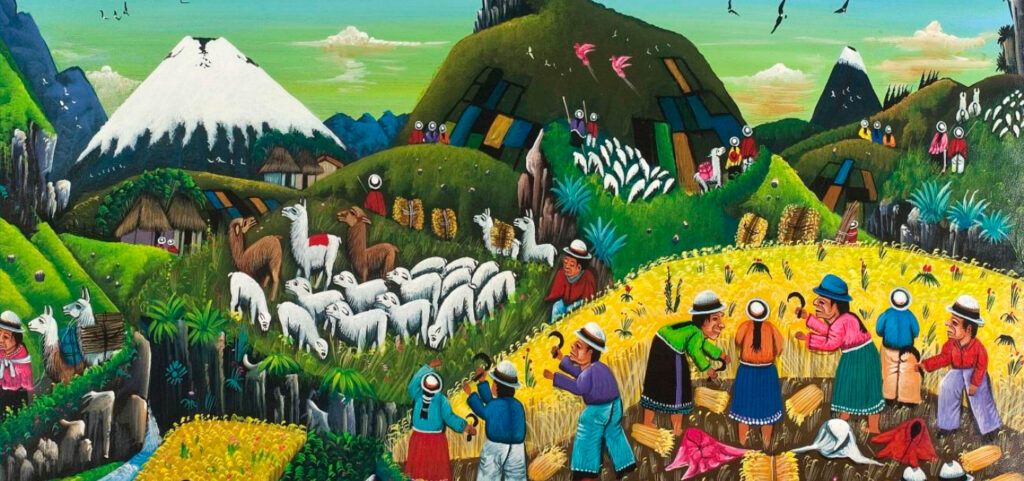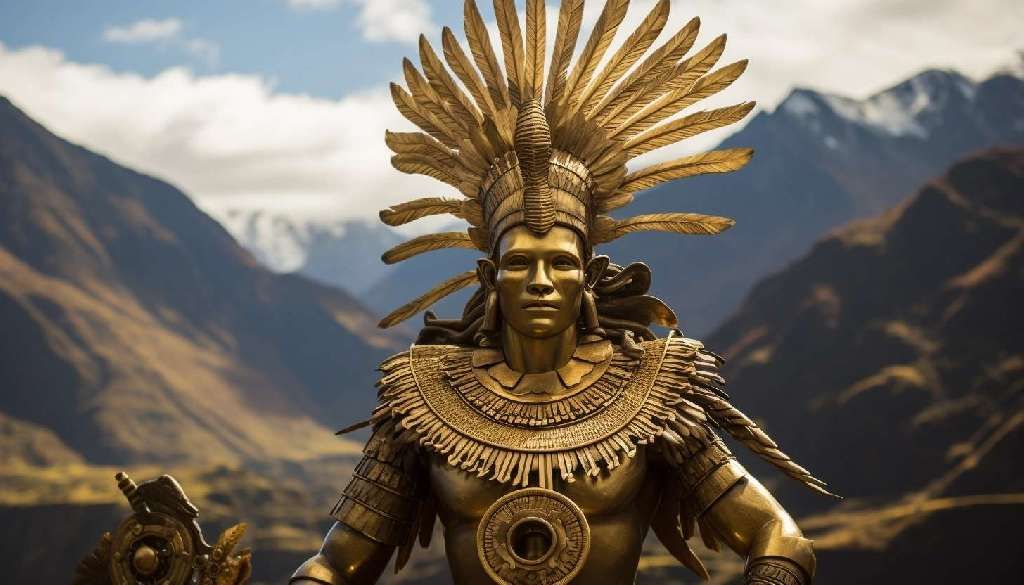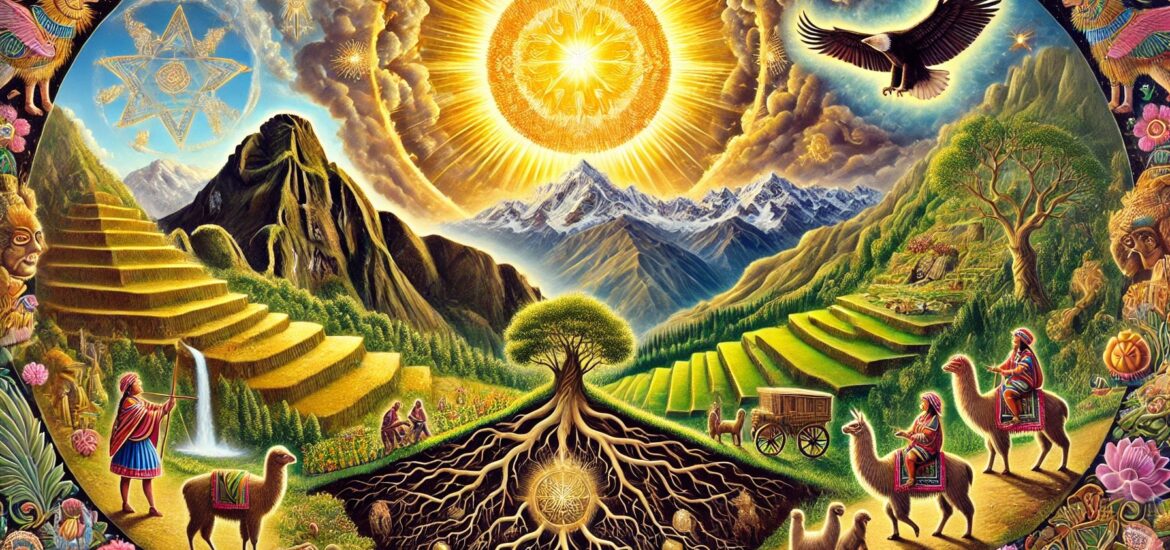The Andean Cosmovision offers a unique way of perceiving the world that differs from Western perspectives. In the West, we frequently rely on science and religion to understand reality since they are the base of our beliefs. However, the Andean worldview encourages us to think differently.
To properly enjoy Cosmovision, we must let go of our preconceived ideas and embrace them as a fresh and fascinating way to interpret life. The Andean Cosmovision marks a magnificent feeling of mysticism. This viewpoint allows people to immediately experience the divine nature of reality.
It highlights what people can achieve with their beliefs rather than simply what they believe. This approach encourages a strong connection with Nature and the Universe. However, what exactly does the Andean Cosmovision mean? What does include? Or why is it practical for us to know more about it? Stay with us to find the answers.
What is Andean Cosmovision?
In a nutshell, this is how people in the Andes see and understand the world. The Andean cosmovision gives a wonderful glimpse into how Andean cultures, especially the Incas, see the universe. They believe that nature, people, and Pachamama, often known as Mother Earth, are inseparable.
According to this viewpoint, everything in nature, including plants, animals, and mountains, contains its own spirit and energy, just like ourselves as well. Rather than trying to control nature, humans work alongside it and adapt, living in harmony as part of a wider community. People in the Andes have a great respect for time and space.

They regard natural elements such as stunning snow-capped mountains, flowing rivers, and strong volcanoes as essential to their life and religious ceremonies. Their diverse traditions honor essential deities such as the sun (Inti), earth (Pachamama), and moon (Killa). The Andeans often chose high spots for their festivals and rituals, where they would express appreciation and seek divine assistance.
They believed in living in harmony with their surroundings. The Incas considered everything as an element of a bigger, sacred whole. They saw the sun (Inti), the earth (Pachamama), the moon (Killa), lightning (Illapa), mountains (Apus), and many other beings as divine and sentient. This concept linked them profoundly with nature and defined their way of life.
Unveiling the Three Realms
Also called the “Andean Trilogy” is the symbolic trio of sacred creatures in Andean cosmovision: the condor (representing “Hanan Pacha”), the puma (representing “Kay Pacha), and the serpent (representing Ukhu Pacha).
These animals represent various aspects of existence and are fundamental to Andean spiritual beliefs. But what exactly do these Quechua phrases mean? These phrases refer to three realms: heaven, earth, and the underworld. Let’s get briefly into them:
Hanan Pacha refers to the higher world or celestial realm, where gods and heavenly forces reside. The Andean condor represents this realm, which is a revered bird that connects between the earthly and celestial realms. In Inca cosmology, the condor represents wisdom, power, and divine presence, acting as a messenger between the gods and humans.

Kay Pacha is the world we’re in, it’s the realm of reality and consciousness, represented by the puma. This powerful animal embodies qualities like strength, intelligence, and courage, and symbolizes the tangible world in which Andean people live and interact with nature.
Ukhu Pacha refers to the underworld, linked to the unconscious, ancestors, and fertility. It is symbolized by the serpent, representing transformation and wisdom. This world is closely related to death and the spirits of the departed.
These animals—serpent, puma, and condor—are essential in Andean culture, embodying the balance between life, nature, and the cosmos.
Inca’s gods and goddess
Viracocha is known as the main creator god, coming from the Tiahuanaco culture. He is often shown holding two animal-like staffs. The Incas honored him by building beautiful temples, like the Temple of Wiracocha at Raqchi.
Inti, the Sun God, played a crucial role for the Incas, symbolizing life and nourishment. People believed that the Inca emperor was Inti’s son, so the Incas celebrated his importance with annual festivals, such as Inti Raymi.
Pachacamac was a coastal god connected to earthquakes and oracles. The Incas embraced him, and his temple in Lima is still a sacred place.
Pachamama, the Earth Mother, was essential for agriculture and fertility. Even today, people make her offerings, as they believe that Pachamama provides the food people need.

Mama Quilla, the Moon Goddess, was cherished for her role in fertility and for protecting women. The Incas built temples in her honor, including one in Machu Picchu.
Apus are mountain spirits, and people considered them to be living gods. The Incas offered sacrifices to them to ensure the well-being of the Andean people.
Illapa, the god of rain and lightning, was in charge of the weather. During the Inca Empire, they built shrines for him in Cusco to show their respect.
The Duality of the Inca’s Beliefs
The duality concept is an important part of Andean culture. It shows us how things are often divided into pairs that complement each other. The terms Hanan (high) and Urin (low) represent this idea, which highlights a worldview where everything is connected, even though it appears divided. In the organization of the “Tahuantinsuyo”, or the Inca Empire, four regions (“suyos”) beautifully illustrate this duality.
This quadripartition combines Hanan and Urin, with regions like Chinchaysuyo and Antisuyo representing the high areas, while Contisuyo and Collasuyo reflect the low areas. Art has also played a role in expressing this duality. For example, Felipe Guaman Poma de Ayala’s “Nueva corónica i Buen Gobierno” illustrates this concept

In the chapter “El primer mundo. Adán y Eva,” where the cosmos is divided into dual aspects like Sol (sun) and Luna (moon). In southern Peru, communities beautifully show the idea of duality in their daily lives through their connections with nature and each other. This concept comes to life in the way they view Pachamama (Mother Earth) and the Apus (sacred mountains).
These relationships represent the balance of feminine and masculine energies and highlight what nurtures and protects us. This duality is a key part of how they understand the world. In their farming and spiritual practices, farmers know they must balance using resources with caring for the land, as they realize that taking from nature requires giving something back. This reflects a respectful relationship that honors the gifts of the earth.
Andean Cosmovision in the Current Day
Thanks to their philosophy, Andean communities have maintained a sustainable relationship with the environment for many years, ensuring that nature can continue to support future generations. By embracing these principles in their practices, they foster harmony within their communities and the larger ecosystem.
Their understanding of duality guides them in nurturing both the land and their community, emphasizing the interconnectedness of all life in the Andean worldview. Those who still inhabit the Andes keep these traditions alive through their ceremonies and daily lives.
If you want to learn more and explore the Peruvian Andes, Viagens Machu Picchu offers personalized tours and experiences just for you. Contact our experts to discover how to start planning the trip of your dreams—one that will satisfy your thirst for knowledge and contribute to your mental and spiritual growth. The Andes, its culture, and Peru are waiting for you!
Viagens Machu Picchu, journeys that inspire, moments that last.

